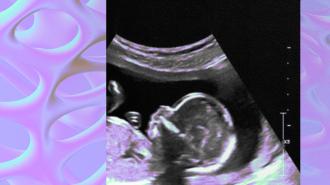A panel of FDA advisors has met to discuss the development of artificial wombs designed to help extremely premature babies survive, potentially bringing the futuristic devices one step closer to reality.
The challenge: A typical healthy pregnancy lasts about 40 weeks, but 10% of babies arrive prematurely, before week 37.
Premature birth is the leading cause of neonatal death, and the earlier a baby is born, the greater the risk of health issues and the lower the chance of survival — in the US, 94% of babies born at 28 weeks survive compared to just 11% of those born at 22 weeks.
The idea: Many premature babies spend the first weeks or months of their lives in incubators, air-filled devices that provide a warm, safe environment for them until their bodies develop enough to survive outside the hospital.
To improve outcomes for babies born extremely prematurely — before 28 weeks — some researchers believe we need incubators that are more like the environment the baby departed early: the womb.
“Fetal lungs are designed to function in fluid, and we simulate that environment here.”
Marcus G. Davey
Artificial wombs: Many groups across the globe are developing artificial wombs, but in the US, a team from the Children’s Hospital of Philadelphia (CHOP) is farthest along.
Its system, called EXTEND (“EXTrauterine Environment for Neonatal Development”), consists of a large “Biobag,” filled with lab-made amniotic fluid, and an external device that connects to a baby’s umbilical cord to oxygenate its blood.
“Fetal lungs are designed to function in fluid, and we simulate that environment here, allowing the lungs and other organs to develop, while supplying nutrients and growth factors,” said fetal physiologist and EXTEND developer Marcus G. Davey.
The next step: In 2017, the CHOP team published a paper detailing how premature lambs survived and continued developing normally in its artificial wombs for up to 28 days.
Lambs are the standard animal model used for neonatal research. Non-human primates grow at about the same pace as humans, but they’re too small at the comparable point in development to be relevant. Pigs, meanwhile, are a good size match, but more “developmentally advanced (near term),” according to Alan Flake, co-inventor of EXTEND.
To date, CHOP has tested its artificial womb on more than 300 lambs and determined that the animal model is “robust and stable” (it’s not clear if any of the lambs were allowed to continue growing outside EXTEND or if all were sacrificed for study at the end of their trials).
Now, CHOP wants permission from the FDA to begin trials with preterm humans, in the hope the devices could one day be used for babies born as early as 22 weeks.
Under consideration: Clinical trials in children are already more complicated than in adults, given that a child might be too young to really understand what they’re getting into, and in the case of an artificial womb, a child definitely wouldn’t be able to have a say in their involvement in a trial.
Parents, meanwhile, would likely be making the decision to participate under serious duress — few expect their baby to be born extremely premature, and for an artificial womb to be most effective, a preemie would likely need to be transferred to it as quickly as possible after birth.
It may be hard for parents to weigh the relative risks of different treatments when considering a totally new technology like an artificial womb.
According to a study in JAMA cited by STAT, only 49.4% of babies born at 23 weeks survive, and the survival rate at 22 weeks falls to just 10.9%. But whether and how much an artificial womb might improve survival isn’t yet clear, and the decision will be fraught.
In an attempt to grapple with these issues and others surrounding the development of artificial wombs, the FDA convened a two-day meeting of its Pediatric Advisory Committee — a group of experts that advises it on matters related to pediatric research — on September 19 and 20.
During that meeting, CHOP and other artificial womb developers, including teams from the Hospital for Sick Children in Toronto and Mott Children’s Hospital in Michigan, delivered presentations to the panel, as did experts in animal studies, pediatrics, and biomedical ethics.
Looking ahead: No decisions have been made based on the meeting — the panel can only advise the FDA, not actually give the greenlight for trials — but based on the evidence presented, at least a few panelists see a need for more animal studies before human trials, according to a STAT report.
Given the lack of an ideal animal model for this type of research, the best option might be to perform trials in several species to “fill gaps,” according to Annabelle Crusan, an FDA veterinary medical officer, who delivered a presentation during the meeting.
If artificial wombs do reach human trials, the panelists seemed to be in agreement that the endpoints should include not only survival, but a child’s quality of life after leaving the artificial womb. That means the trials themselves could take many years to reach conclusions.
Still, the fact that the FDA even convened the panel means artificial wombs are closer to reality than they’ve ever been before — and potentially closer to saving the lives of countless tikes too tiny to survive and thrive on their own.
We’d love to hear from you! If you have a comment about this article or if you have a tip for a future Freethink story, please email us at tips@freethink.com.
